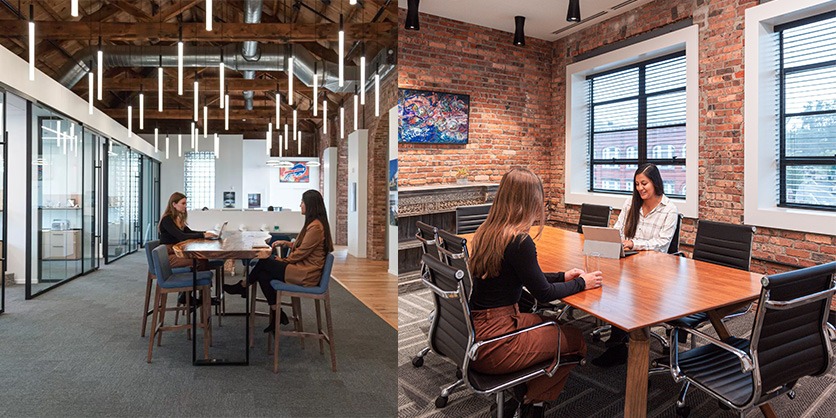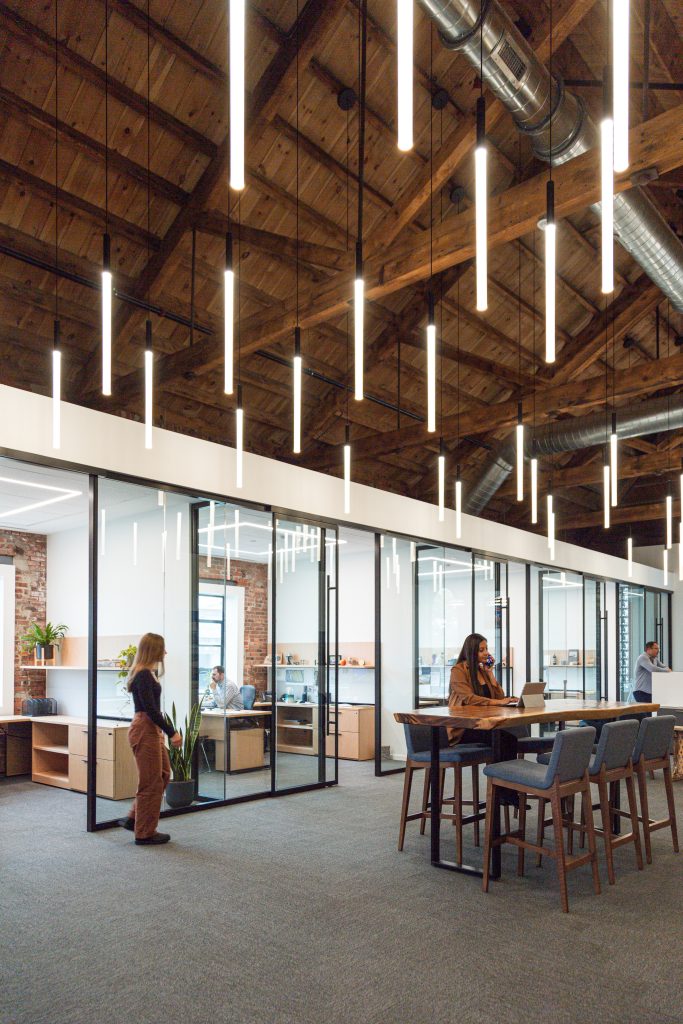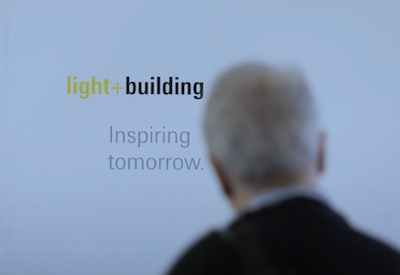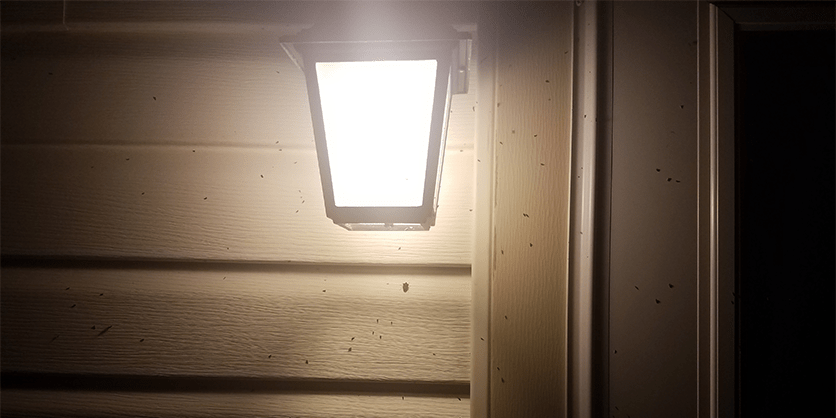HLW: Renovating the Lighting at the Hampton House in Montclair, NJ, and Maintaining the Existing Natural Lighting

HLW’s design scheme incorporates the building’s historic character while adding contemporary touches to meet the needs of a modern functional workspace.
Bad lighting in the workplace can also be a recipe for disaster for the employee’s mental health and sleep habits. Strategic, thoughtful lighting design demonstrates positive effects on both the functional and emotional aspects of the workplace – such as visibility, psychological and emotional aspects, and employee contentment and mood
Cue HLW’s recently completed office project for Crow Holdings, a real estate investment and development firm, at the Hampton House in Montclair, NJ. The building, a historical Art Deco-style building with a rich history dating back to the mid-1800s, inspired the team to thoughtfully curate beneficial, aesthetically pleasing lighting for the office, while maintaining the existing natural lighting in the space. HLW’s design scheme incorporates the building’s historic character while adding contemporary touches to meet the needs of a modern functional workspace.

Taking advantage of the vaulted ceiling, the lighting program is designed to create an ambient atmosphere, featuring “floating” candelabras that illuminate the workspace effectively. Beyond their practical purpose of effectively illuminating the area, these fixtures contribute to the creation of a visually pleasing office, adding an element of sophistication and charm to the overall design.
Some further details about the office include:
More information available here









